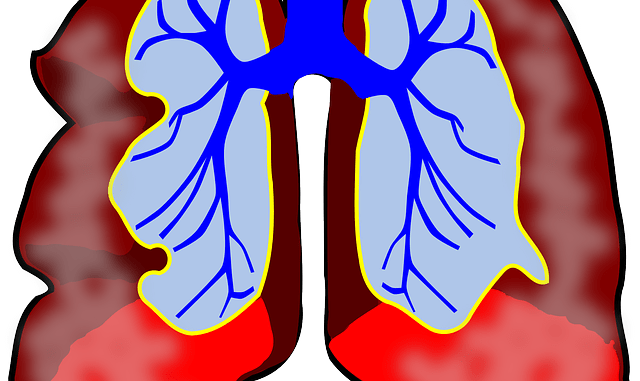
A compound that sometimes gets mentioned in the same breath as theobromine and caffeine is theophylline. It is chemically known as 1,3-dimethylxanthine and is a drug called a bronchodilator used to treat a variety of respiratory diseases such as chronic pulmonary disease (COPD) and asthma. It helps to relieve that horrible feeling of breathlessness by relaxing the muscles in the airways. This opens them up so that air can flow more easily through the bronchioles and smaller passageways of the lungs (Barnes et al., 2009).
The drug is widely prescribed and very commonly prescribed. You may see it listed under a variety of brand names. It is relatively cheap and widely available. It is a third-line treatment for use in poorly controlled patients
It is chemically similar to caffeine and theobromine because it comes from the same methylxanthine family. It is not known to this day what the molecular basis for its activity is
The chemical can be isolated from tea (Camellia sinensis) and cocoa (Theobroma cacao).
The liver converts caffeine into theophylline to aid secretion.
Medical Uses
- relaxing bronchial smooth muscle
- increasing heart muscle contractility and efficiency; as a positive inotrope
- increasing heart rate: (positive chronotropic)
- increasing blood pressure
- increasing renal blood flow
- anti-inflammatory effects
- central nervous system stimulatory effect mainly on the medullary respiratory center.
The main therapeutic uses of theophylline are aimed at:
- chronic obstructive pulmonary disease (COPD)
- asthma
- infant apnea
- Blocks the action of adenosine; an inhibitory neurotransmitter that induces sleep, contracts the smooth muscles and relaxes the cardiac muscle.
Safety Issues Of Theophylline
A number of side effects occur and it has relatively low efficacy because inhaled β2-agonists are far more effective as bronchodilators and inhaled corticosteroids have a greater anti-inflammatory effect.
Analysis
Ion chromatography is employed for the simultaneous determination of theophylline along with caffeine, theobromine, various artificial sweetners like sodium saccharin, aspartame and acesulfame K, and the preservatives, benzoic acid and sorbic acid. These are all common components in beverages so the method offers a convenient technique for analysis (Chen & Wang, 2001). The resolution and analysis was performed on an anion-exchange analytical column operated at 40°C within 45 min by an isocratic elution with 5 mM aqueous NaH2PO4 (pH 8.20) solution containing 4% (v/v) acetonitrile as eluent, and the determination by wavelength-switching ultraviolet absorbance detection. Good recoveries were possible.
The detection of theophylline is often a quality requirement in conjunction with analysis of caffeine and theobromine in stimulant products, in cocoa and other natural products which contain these methylxanthines. High performance liquid chromatography (HPLC) certainly allows for simultaneous determination of the three compounds (Bispo et al., 2002; del Rosario Brunetto et al., 2007). Reversed-phase chromatographic separation with ultraviolet absorbance detection is popular (Hurst et al., 1985).
References
Barnes, P.J. Drazen, J.M., Rennard, S.I., Thomson, N.C. (2009) Theophylline In: Asthma and COPD: basic Mechanisms and Clinical Management. (2nd ed).
Bispo, M. S., Veloso, M. C. C., Pinheiro, H. L. C., De Oliveira, R. F. S., Reis, J. O. N., & De Andrade, J. B. (2002). Simultaneous determination of caffeine, theobromine, and theophylline by high-performance liquid chromatography. Journal of Chromatographic Science, 40(1), pp. 45–48
Chen, Qin-Chuan, Mou, Shi-fen, Hou, Xiao-ping, & Ni, Zhe-ming (1998). Simultaneous determination of caffeine, theobromine and theophylline in foods and pharmaceutical preparations by using ion chromatography. Analytica Chimica Acta, 371, pp. 287–296
Chen, Q. C., & Wang, J. (2001). Simultaneous determination of artificial sweeteners, preservatives, caffeine, theobromine and theophylline in food and pharmaceutical preparations by ion chromatography. Journal of chromatography A, 937(1-2), pp. 57-64
del Rosario Brunetto, M., Gutiérrez, L., Delgado, Y., Gallignani, M., Zambrano, A., Gomez, A., … & Romero, C. (2007). Determination of theobromine, theophylline and caffeine in cocoa samples by a high-performance liquid chromatographic method with on-line sample cleanup in a switching-column system. Food Chemistry, 100(2), pp. 459-467.
Hieda, Z., Kashimura, S., Hara, K., & Kageura, M. (1995). Highly sensitive and rapid determination of theophylline, theobromine and caffeine in human plasma and urine by gradient capillary high/performance liquid chromatography-frit-fast atom bombardment mass spectrometry. Journal of Chromatography B, 667(2), pp. 241–246.
Hurst, W. J., Snyder, K. P., & Martin, R. A. Jr, (1985). Use of microbore high-performance liquid chromatography for the determination of caffeine, theobromine and theophylline in cocoa. Journal of Chromatography, 318, pp. 408–411
Parra, P., Limon, A., Ferre, S., Guix, T., & Jane, F. (1991). High performance liquid chromatographic separation of caffeine, theophylline, theobromine and paraxanthine in rat brain and serum. Journal of Chromatography, 570, pp. 185–190
Srdjenovic, B., Djordjevic-Milic, V., Grujic, N., Injac, R., & Lepojevic, Z. (2008). Simultaneous HPLC determination of caffeine, theobromine, and theophylline in food, drinks, and herbal products. Journal of chromatographic Science, 46(2), pp. 144-149.

Leave a Reply